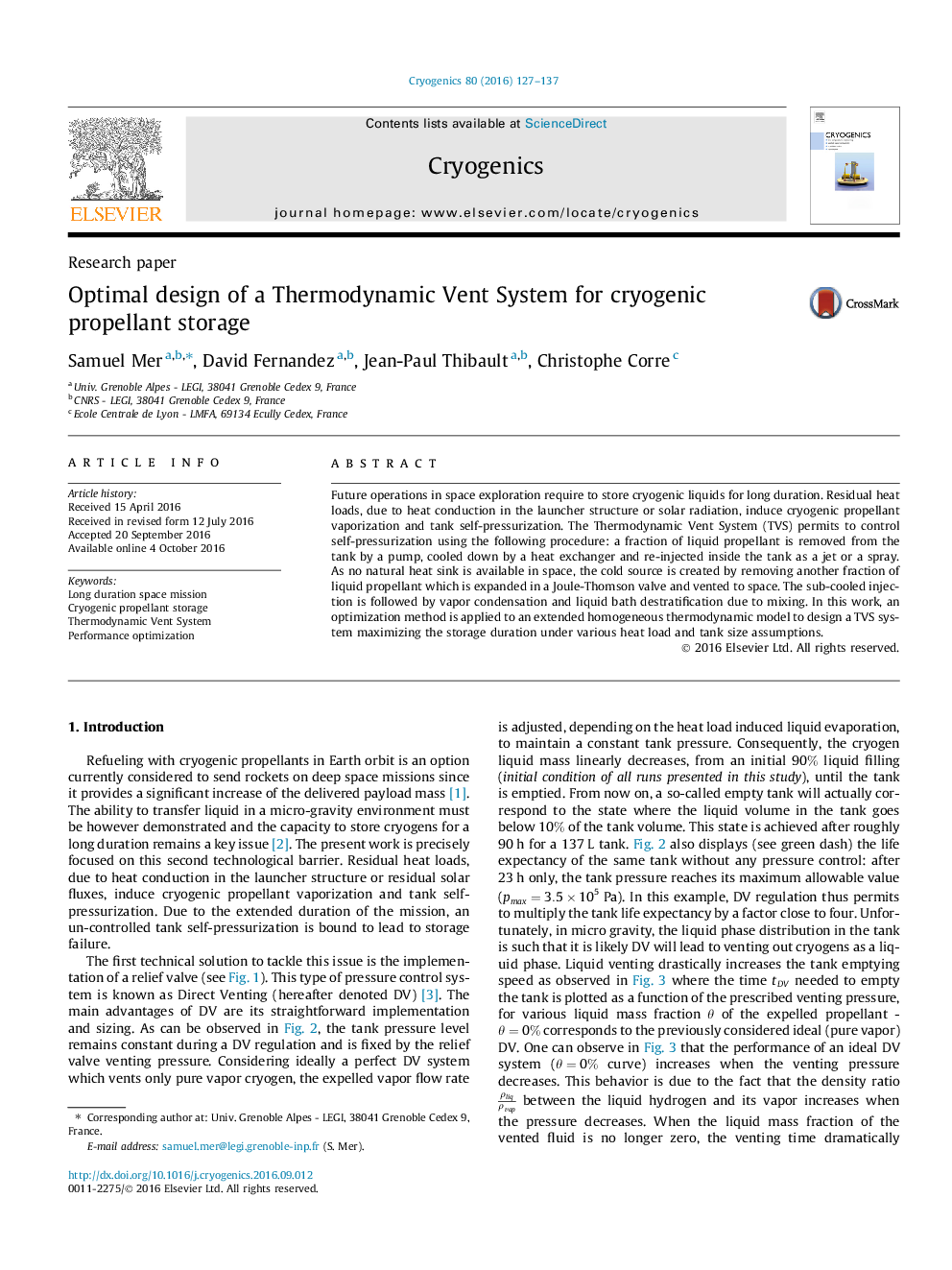| Article ID | Journal | Published Year | Pages | File Type |
|---|---|---|---|---|
| 5444230 | Cryogenics | 2016 | 11 Pages |
Abstract
Future operations in space exploration require to store cryogenic liquids for long duration. Residual heat loads, due to heat conduction in the launcher structure or solar radiation, induce cryogenic propellant vaporization and tank self-pressurization. The Thermodynamic Vent System (TVS) permits to control self-pressurization using the following procedure: a fraction of liquid propellant is removed from the tank by a pump, cooled down by a heat exchanger and re-injected inside the tank as a jet or a spray. As no natural heat sink is available in space, the cold source is created by removing another fraction of liquid propellant which is expanded in a Joule-Thomson valve and vented to space. The sub-cooled injection is followed by vapor condensation and liquid bath destratification due to mixing. In this work, an optimization method is applied to an extended homogeneous thermodynamic model to design a TVS system maximizing the storage duration under various heat load and tank size assumptions.
Related Topics
Physical Sciences and Engineering
Materials Science
Electronic, Optical and Magnetic Materials
Authors
Samuel Mer, David Fernandez, Jean-Paul Thibault, Christophe Corre,
